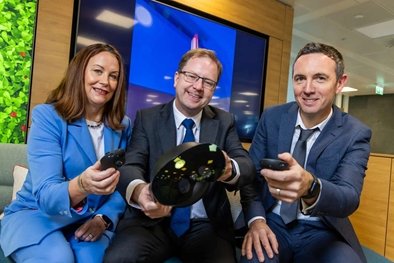Vodafone Romania and Salvamont, the country’s National Mountain Rescuers Association, have launched two digital solutions designed to help accelerate search and rescue operations.
Connectivity can be limited in mountainous areas – high rocky walls can block the reach of mobile signal generated by ground-based telecommunication towers. This can make it more difficult for people to contact emergency services if they have suffered an accident, or for mountain rescue teams to find people who are lost.
Vodafone has developed a solution to tackle this problem by using drones to extend mobile signal coverage into those hard-to-reach areas. By installing and attaching ground-based telecoms equipment on means of transportation suitable to reach remote locations, such as all-terrain vehicles, Vodafone’s mobile network can be connected via satellite.

Vodafone also installs radio equipment on a professionally piloted drone which is flown above designated search areas. This system has the capacity to generate a mobile signal (voice and data), including 5G, within a radius of up to 10km, creating a temporary network to support emergency rescue missions. Any mobile phone in that area connects to the network automatically, regardless of the operator or network provider, enabling victims of an accident to make an emergency call.

If the Salavamont-Vodafone app is installed on the phone, with the location via mobile data function switched on before starting their route, mountain rescue teams can accurately track its location and find the person faster.

Vodafone Technology teams developed and tested the system in-house.
The second solution uses photogrammetry and artificial intelligence (AI) to capture and analyse geolocated images, enabling the automatic detection of missing persons.
A second professional drone, equipped with photogrammetry and thermal imaging cameras, is flown above the search area and can take between 130 and 300 images in less than 30 minutes. During this time, it can travel up to 5km above ground, covering an area of up to 24 hectares. These images are downloaded and sent automatically over the previously established emergency network to the Salvamont-Vodafone National Data Analysis Centre. Here they are processed and analysed by an AI-powered automatic detection programme, named SARUAV, which looks for clues such as a person’s figure or clothing, and then sends the coordinates of where they were spotted to mountain rescue teams. The whole process can be completed in minutes.

Prof. Sabin Cornoiu, President of the National Association of Mountain Rescuers in Romania, said: "Each year, the number of rescue missions increases by 30-40%. Only last year, we had over 7,000 missions and more than 8,500 rescued people. In such interventions, time is the most important element. We have well-trained human resource, but there are situations when more is needed. Using the solutions and having a command centre equipped with state-of-the-art technology which is connected to Vodafone's fibre optic network, we practically increase the search capacity by almost 10 times, which means more lives saved, but also an intervention time, risks and effort considerably reduced for mountain rescuers. We rely on Vodafone’s network on this project and its expertise as a technological partner.”



























